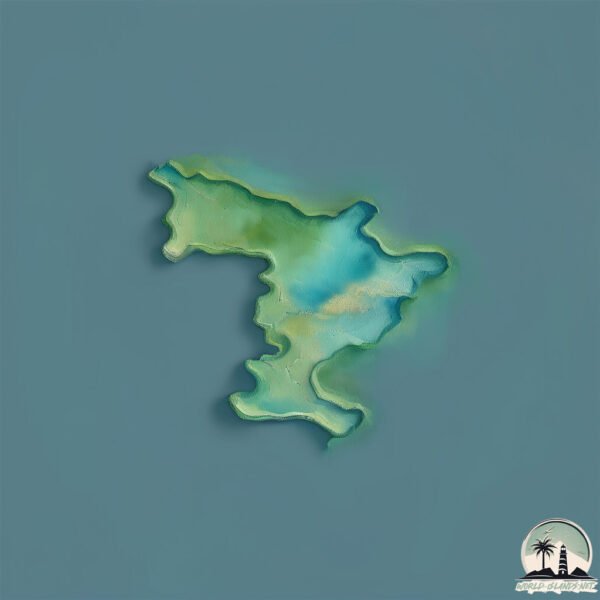Welcome to Cheval , a Continental island in the Gulf of Alaska, part of the majestic Pacific Ocean. This guide offers a comprehensive overview of what makes Cheval unique – from its geography and climate to its population, infrastructure, and beyond. Dive into the details:
Geography and size of Cheval
Size: 0.998 km²Coastline: 12.1 kmOcean: Pacific OceanSea: Gulf of AlaskaContinent: North America
Cheval is a Tiny Island spanning 0.998 km² with a coastline of 12.1 km.
Archipel: –
Tectonic Plate: North America – Covers North America and parts of the Atlantic and Arctic Oceans, characterized by diverse geological features and varying levels of seismic activity.
The geographic heart of the island is pinpointed at these coordinates:
Climate and weather of Cheval
Climate Zone: ContinentalClimate Details: Warm-Summer Humid Continental ClimateTemperature: Warm Summer
Climate Characteristics: Features warm summers and cold winters with consistent precipitation, common in higher latitudes.
Topography and nature of Cheval
Timezone: UTC-09:00Timezone places: America/AnchorageMax. Elevation: 125 m Mean Elevation: 94 mVegetation: Mixed ForestTree Coverage: 76%
The mean elevation is 94 m. The highest elevation on the island reaches approximately 125 meters above sea level. The island is characterized by Plains: Flat, low-lying lands characterized by a maximum elevation of up to 200 meters. On islands, plains are typically coastal lowlands or central flat areas.
Dominating Vegetation: Mixed Forest
Vegetation: 3 vegetation zones – Moderately Diverse Island
Infrastructure and Travelling to Cheval
Does the island have a public airport? no .
Does the island have a major port? no .
The mean population of Cheval is 0 per km². Cheval is Uninhabited. The island belongs to United States of America .
Continuing your journey, Pye is the next notable island, situated merely km away.
CHEVAL BLANC MALDIVES | Sublime luxury resort (full tour in 4K)
Join me on a full tour of PHENOMENAL Cheval Blanc Randheli Maldives, one of the world's most fabulous private island resorts.
CHEVAL BLANC MALDIVES | Sublime luxury resort (full tour in 4K)
Join me on a full tour of PHENOMENAL Cheval Blanc Randheli Maldives, ...
Join me on a full tour of PHENOMENAL Cheval Blanc Randheli Maldives, one of the world's most fabulous private island resorts.
Cheval Blanc: Ultimate Luxury Private Island Villa in the Maldives | EliteLyfe Exclusive .
From breathtaking oceanfront villas to world-class dining, experience ...
From breathtaking oceanfront villas to world-class dining, experience the ultimate tropical escape. Watch now to explore the ...
Cheval Blanc Randheli Private Island - the purest expression of exclusive privacy.
A breathtaking haven away from the rest, the purest expression of ...
A breathtaking haven away from the rest, the purest expression of exclusive privacy. Meet the new definition of exquisite island ...
United States of America is classified as Developed region: G7: Group of Seven – Major advanced economies, including Canada, France, Germany, Italy, Japan, the United Kingdom, and the United States. The level of income is High income: OECD.
News – Latest Updates and Headlines from Cheval
Stay informed with the most recent news and important headlines from Cheval. Here’s a roundup of the latest developments.
Loading...
Please note: The data used here has been primarily extracted from satellite readings. Deviations from exact values may occur, particularly regarding the height of elevations and population density. Land area and coastline measurements refer to average values at mean high tide.

